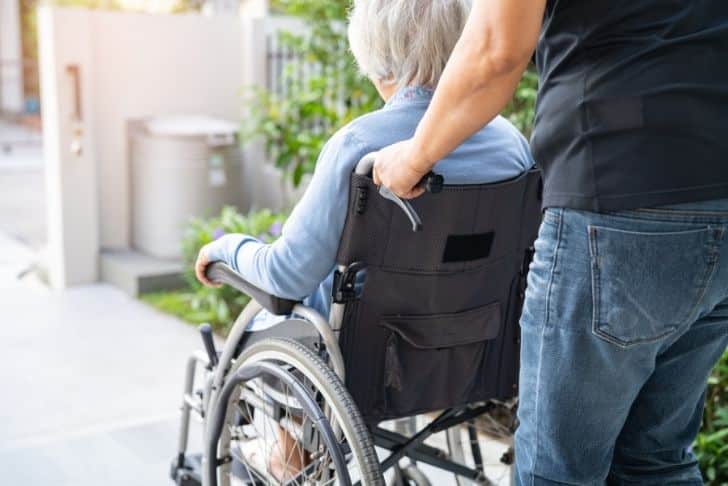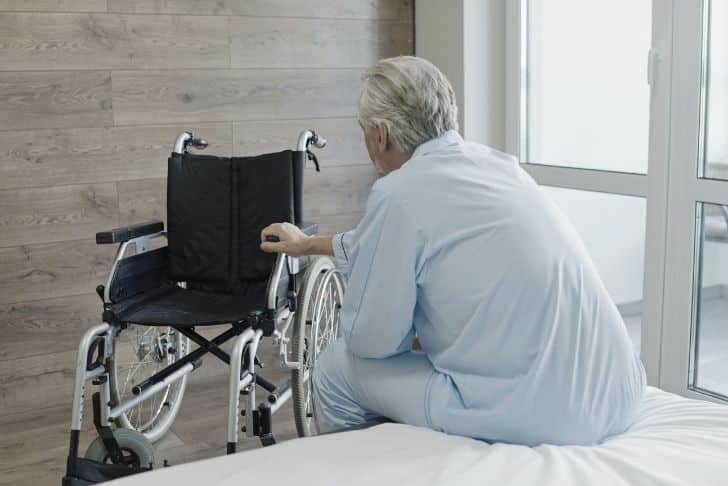In the article “The Role of Mobility Devices in Accessibility,” the use of mobility devices by individuals with physical disabilities is thoroughly explored. As you navigate through the sections, you’ll uncover insightful information about how these devices, ranging from wheelchairs to Segways, offer a lifeline to those who use them, empowering these individuals to move freely and independently. Understand the different types of mobility devices available, the legal requirements surrounding their use, and how businesses and public amenities can better accommodate mobility devices to promote inclusivity. Crucially, the piece also touches on the importance of respecting and understanding the needs of individuals who rely on these devices for mobility. This comprehensive exploration helps to shed light on the significant role that mobility devices play in creating a more accessible world for everyone.
Types of Mobility Devices
Mobility devices are vital tools that enhance the quality of life for people with disabilities. They fall into two broad categories: manual and power wheelchairs, and manually powered mobility aids.
Manual and Power Wheelchairs
Wheelchairs can be either manually operated or power-driven. They are mainly designed to help individuals get around. Power wheelchairs are typically powered by batteries and may have additional features such as reclining seats and adjustable footrests.
Manually Powered Devices
Manually powered mobility devices include walkers, canes, crutches, and braces. These devices are used to enhance mobility and provide stability. The choice between a wheelchair or a manually powered device often depends on an individual’s physical limitations, personal preferences, and the nature of the task at hand.
Other Powered Options
In addition to wheelchairs, there are other powered options available, such as golf carts and electronic personal assistance mobility devices like Segways®. These options also include devices designed to operate in areas without defined public routes such as all-terrain vehicles (ATVs).
Accessible Spaces and Mobility Devices
Accessibility remains a priority when it comes to creating spaces that can accommodate mobility devices.
Requirements for Public Spaces
State and local governments, as well as businesses, are required to allow individuals with disabilities who use mobility devices into all areas where the public can go. Various factors such as the type, size, weight, and speed of the device, pedestrian traffic, and the facility’s design are considered.
Navigating Business and Government Facilities
Business and government facilities must ensure they can accommodate all types of mobility devices unless they can demonstrate that a particular type of device cannot be operated safely within the facility.
Storage and Management of Mobility Devices
Questions of storage also come into play. Some mobility devices, particularly powered ones, may need a specific storage area, especially when not in use.

Guidelines for Mobility Device Usage
Understanding the guidelines for the usage of mobility devices is crucial for seamless interaction in common spaces.
Operational Safety Requirements
The operational safety of mobility devices centres not only on the functionality of the device but also on safe practices to avoid the risk of accidents within the facility. Therefore, businesses and governments can impose legitimate safety requirements based on actual risks.
Speed & Mobility Device Control
In considering safety, the speed at which a mobility device is operated is crucial. Some facilities may establish a policy requiring users to operate devices at the speed of pedestrian traffic.
Security Screening of Mobility Devices
For security purposes, some facilities may provide instructions for individuals on how their mobility devices will be screened. This scenario is especially true for powered options that may pose a security risk.
Legal Aspects of Mobility Devices
Knowing the legal aspects concerning mobility devices is crucial in ensuring compliance and respecting the rights of people with disabilities.
ADA Regulations
The Americans with Disabilities Act (ADA) has set out regulations to protect individuals who rely on mobility devices from discrimination and to ensure their access to public spaces.
Mobility device-related rights and obligations of people with disabilities
People with disabilities have the right to use their mobility devices in all areas where the public is allowed. At the same time, they have an obligation to operate their devices safely, in line with the regulations in place within specific facilities.
Policy Setbacks and Advancements
There have been significant policy advancements in protecting the rights of people who require mobility devices, though issues can still arise. However, continued advocacy and legislation adjustments promise a more inclusive future.

Mobility Device Design and Features
The design and features of mobility devices play an integral part in their efficiency.
Innovations in Mobility Devices
Technological advancements have driven numerous innovations in mobility devices. These innovations have enhanced mobility, comfort, and accessibility for users.
Customizing Mobility Devices for Individual Needs
Sometimes, mobility devices may need to be customized to meet individual needs. Customizations may involve adjusting the size, adding specific features, or modifying controls.
Mobility Devices for Various Terrains
Given the diverse nature of terrains, mobility devices are designed to handle specific environments. All-terrain devices can navigate multiple ground types, from smooth surfaces to rough, outdoor terrains.
The Role of Mobility Devices in Independent Living
Mobility devices play a significant role in helping individuals maintain independence in their daily lives.
Enhancing Personal Mobility
Mobility devices enhance personal mobility by providing individuals with the means to move around their environment independently.
Impact on Quality of Life and Self-esteem
By enhancing independence, mobility devices significantly impact the quality of life and self-esteem of individuals with mobility impairments. The ability to maneuver independently inherently boosts one’s confidence.
Role in Personal Safety
Mobility devices also play a crucial role in personal safety by providing stable and reliable means of movement.

Inclusive Design Standards for Mobility Devices
To ensure mobility devices can be used effectively, the need for inclusive design standards arises.
Architectural Standards
Designing spaces to be accessible for all mobility devices is essential. Architectural standards consider aspects like door widths, ramp gradients, elevator sizes, and the arrangement of furniture.
Best Practices for Mobility Friendly Spaces
Best practices involve creating an environment that caters to a wide range of mobility devices. These may include clear signage, wide corridors, and uncluttered pathways.
Role of Technology in Accessible Design
Tech advancements have aided in creating more accessible designs. From building planning software that includes accessibility checks to smart devices that aid navigation for people with disabilities.
Training and Expertise: The Need for Mobility Device Skills
Training in the use of mobility devices is essential for users and the professionals advising them.
Importance of User Training
Users must be trained to safely and effectively use their mobility devices. Training typically includes maneuvering, controlling speed, and understanding the functionalities and limitations of the mobility device.
Healthcare Professional’s Role in Recommending Mobility Devices
Healthcare professionals play a pivotal role in recommending the appropriate mobility devices for individuals based on their medical and personal needs.
Training Requirement for Safe and Effective Mobility Device Use
safe and effective use of mobility devices requires training not only for individuals using these devices but also for family members, caregivers, and anyone else who may assist the user.
Mobility Devices and Transportation
The use of mobility devices raises significant considerations in the context of transportation.
Public Transportation Accessibility
Public transportation should be designed and equipped to accommodate a variety of mobility devices. Measures can include wheelchair-friendly buses and trains, and accessibility features at stations and stops.
Private Vehicle Modifications
For private vehicle use, modifications might be needed to transport mobility devices. Modifications can range from hand controls and lifts to ramps and spacious trunks.
Safe Traveling With Mobility Devices
Whether using public or private transportation, it is essential to ensure that mobility devices are safely secured to prevent accidents during transit.
Future of Mobility Devices
The future of mobility devices looks promising, with several advancements already underway.
Evolution of Mobility Devices
Mobility devices have evolved significantly over the years. From manually powered devices like canes and crutches to power-driven wheelchairs and scooters, the continued evolution is aimed at enhancing independence for users.
Technological Advancements in Mobility Devices
Technological advancements in battery life, control systems, and materials have enhanced the capabilities of mobility devices. Future technology promises even greater improvement, with developments like AI-guided devices on the horizon.
Future Trends in Mobility Devices
While predicting specific future trends can be challenging, it is clear that increased personalization, improved technology, and greater integration with other tech (like smartphones and smart homes) will play significant roles in defining the future of mobility devices.
